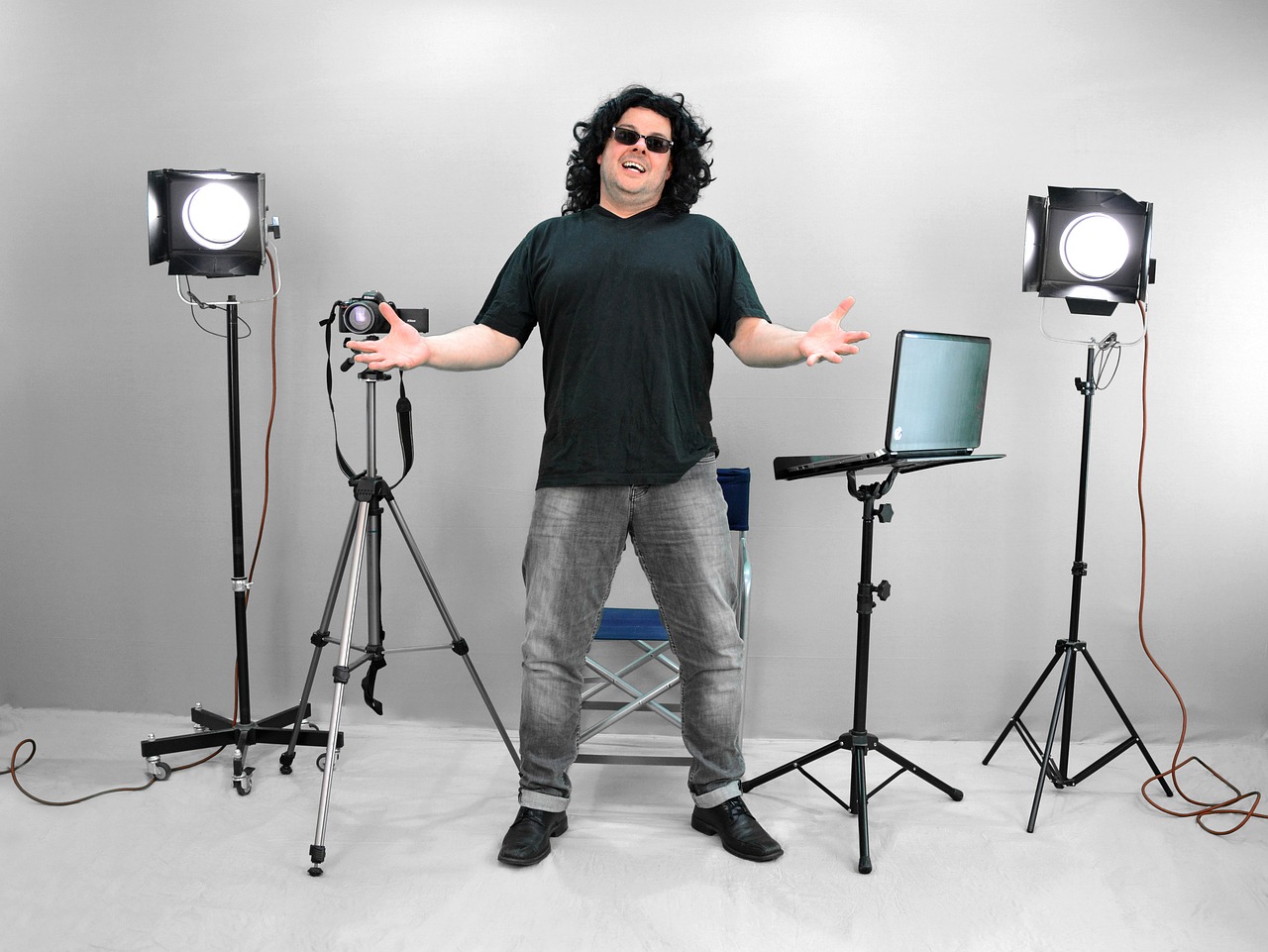Portrait Photography Portrait photography is an art form that allows photographers to capture the essence…
Product Photography
Product photography plays a crucial role in today’s digital landscape. Whether you’re an e-commerce business owner, a blogger, or a social media influencer, high-quality product images can significantly impact your success. In this article, we will delve into the importance of product photography, explore key techniques, and provide tips to help you capture stunning images that engage and entice your target audience.
1. Introduction to Product Photography

Product photography involves capturing images of items to showcase their features, details, and qualities. It is a specialized genre of photography that focuses on highlighting the aesthetics and functionality of products. Whether you’re selling physical goods online or promoting them through various marketing channels, compelling product images are essential to attract and engage potential customers.
2. The Impact of High-Quality Product Images
High-quality product images can significantly influence consumer behavior and purchasing decisions. When customers browse online, they heavily rely on visuals to evaluate products. Clear, well-lit, and visually appealing images create a positive impression, build trust, and enhance the perceived value of the product. In contrast, poor-quality images can deter potential buyers and lead to lost sales opportunities.
3. Essential Equipment for Product Photography

To capture professional product images, you’ll need certain equipment. Here are the key items to consider:
- Camera: Invest in a DSLR or mirrorless camera with manual controls for optimum control over settings.
- Lens: Use a macro lens or a lens with a focal length suitable for your desired product shots.
- Tripod: Stabilize your camera for sharp and consistent images.
- Lighting: Set up lighting equipment, such as studio lights or continuous LED panels, for controlled illumination.
- Reflector: Use reflectors to bounce light and reduce shadows.
4. Lighting Techniques for Captivating Product Images

Proper lighting is vital for product photography. Here are some techniques to achieve optimal lighting:
- Natural Light: Utilize diffused natural light by shooting near windows or outdoors on cloudy days.
- Studio Lighting: Set up a three-point lighting system using key, fill, and backlighting.
- Light Modifiers: Use softboxes, umbrellas, or diffusers to soften and control the light’s intensity and direction.
- Light Tents: Employ light tents or lightboxes to achieve even and shadow-free lighting for smaller products.
5. Composition and Styling Tips
Effective composition and styling can enhance the visual appeal of your product images. Consider the following tips:
- Rule of Thirds: Place key elements along the imaginary gridlines to create a visually balanced composition.
- Leading Lines: Utilize lines, curves, or shapes to guide the viewer’s eyes towards the main subject.
- Depth of Field: Experiment with shallow or deep depths of field to emphasize specific elements or create a blurred background.
- Product Placement: Position the product strategically, emphasizing its unique features or functionality.
6. Choosing the Right Backgrounds and Props
The choice of backgrounds and props can greatly impact the overall aesthetic and storytelling of your product images. Consider the following:
- Clean and Simple: Opt for a clean, neutral background to avoid distractions and keep the focus on the product.
- Textures and Patterns: Introduce subtle textures or patterns that complement the product without overpowering it.
- Relevant Props: Select props that enhance the product’s context, highlight its use, or create a desired atmosphere.
7. Editing and Post-Processing Techniques

Post-processing is an essential step in product photography to refine and enhance the captured images. Here are some editing techniques:
- Image Retouching: Remove blemishes, dust, or unwanted reflections using tools like Photoshop or Lightroom.
- Color Correction: Adjust the color balance, saturation, and brightness to ensure accurate representation.
- Background Removal: Create a transparent background or replace it with a solid color to suit different platforms.
- Image Resizing: Optimize the image size for web or print while maintaining quality and loading speed.
8. Optimizing Images for SEO
When using product images on websites or e-commerce platforms, optimizing them for search engines is crucial. Consider the following SEO practices:
- Image Naming: Use descriptive filenames with relevant keywords instead of generic names like “IMG_1234.”
- Alt Text: Add alt text to describe the image briefly and include keywords naturally for accessibility and SEO purposes.
- Image Compression: Compress the images without compromising quality to improve loading speed.
- Image Sitemaps: Include product images in your sitemap to ensure search engines index them properly.
9. Product Photography for E-commerce Websites

Product photography plays a vital role in the success of e-commerce websites. Key considerations include:
- Consistency: Maintain a consistent style, lighting, and composition throughout the product catalog.
- Multiple Angles: Capture various angles and close-ups to provide a comprehensive view of the product.
- Lifestyle Shots: Include lifestyle images showcasing the product’s usage or demonstrating its benefits.
- Zoom and 360-Degree Views: Implement interactive features like zoom or 360-degree views for a more immersive experience.
10. Product Photography for Social Media Marketing

Social media platforms offer unique opportunities to showcase products creatively. Here’s how to leverage product photography for social media marketing:
- Storytelling: Craft visual narratives that evoke emotions, align with your brand, and resonate with your target audience.
- Influencer Collaborations: Partner with influencers to feature your products in styled shoots or user-generated content.
- Behind-the-Scenes: Share behind-the-scenes glimpses of your product photography process to create transparency and engagement.
- Video Content: Experiment with short videos, tutorials, or stop-motion animations to bring your products to life.
11. Tips for Mobile Product Photography
With the advancement of smartphone cameras, mobile product photography has become increasingly accessible. Consider these tips:
- Lighting: Seek well-lit environments or use additional lighting attachments for better results.
- Tripods and Stabilization: Use smartphone tripods or stabilizers to avoid camera shake and ensure sharp images.
- Editing Apps: Explore mobile editing apps that offer advanced editing tools and filters to enhance your images.
- Composition and Framing: Apply basic composition principles and experiment with different angles and perspectives.
12. Case Studies: Successful Product Photography Examples
Examining successful product photography examples can provide inspiration and insights into effective techniques. Explore case studies of renowned brands or industry leaders to learn from their strategies and execution.
13. The Future of Product Photography

As technology continues to evolve, product photography is likely to undergo further advancements. Anticipated trends include:
- Augmented Reality (AR): Implementing AR to allow customers to virtually try products before purchasingthem.
- Interactive Elements: Incorporating interactive elements within product images to provide a more immersive and engaging experience.
- Artificial Intelligence (AI): Utilizing AI algorithms for automated image editing, background removal, and image enhancement.
- Personalization: Tailoring product images to specific customer segments or customization options.
- 3D Product Visualization: Creating realistic 3D renderings or virtual models of products for enhanced visualization.
14. Common Mistakes to Avoid in Product Photography
While striving for exceptional product photography, it’s essential to be aware of common mistakes and pitfalls. Avoid the following:
- Poor Lighting: Insufficient or harsh lighting that fails to highlight product details and textures.
- Inconsistent Style: Inconsistency in composition, lighting, or editing across product images, leading to a lack of cohesion.
- Overediting: Excessive editing that results in unrealistic colors, unnatural textures, or loss of product integrity.
- Cluttered Backgrounds: Busy or distracting backgrounds that take the focus away from the product.
- Lack of Context: Failing to provide context or lifestyle shots that help consumers envision product usage or benefits.
15. Conclusion
Product photography is a critical component of successful marketing and sales strategies. By investing in high-quality product images, leveraging effective techniques, and optimizing for SEO, you can significantly enhance your brand’s visual appeal, engage your target audience, and drive conversions. Remember to stay consistent, experiment with different approaches, and continuously adapt to emerging trends to stay ahead in the competitive market.
FAQs (Frequently Asked Questions)
- How can I capture professional product images without expensive equipment?
- While professional equipment can enhance your results, you can achieve impressive product images using a smartphone with good camera capabilities, natural lighting, and DIY lighting solutions.
- What are some creative ways to style and compose product images?
- Experiment with different angles, incorporate complementary props, and consider unconventional compositions to create unique and eye-catching product images.
- How can I optimize product images for better search engine visibility?
- Ensure descriptive filenames and alt text, compress images for faster loading times, and include them in your website’s sitemap for search engine indexing.
- Are there any tools or software specifically designed for product photography editing?
- Yes, popular software like Adobe Photoshop and Lightroom offer advanced editing capabilities, while mobile apps like Snapseed and VSCO provide editing options for smartphone users.
- How can I keep up with the evolving trends in product photography?
- Stay updated with industry publications, follow influential photographers and brands on social media, and attend photography workshops or webinars to learn about the latest techniques and trends.
Get Access Now: https://bit.ly/J_Umma
In conclusion, mastering the art of product photography can significantly impact your business’s success in today’s visual-driven world. By following the outlined techniques, staying creative, and adapting to emerging trends, you’ll be able to capture compelling product images that captivate your audience and drive business growth.




